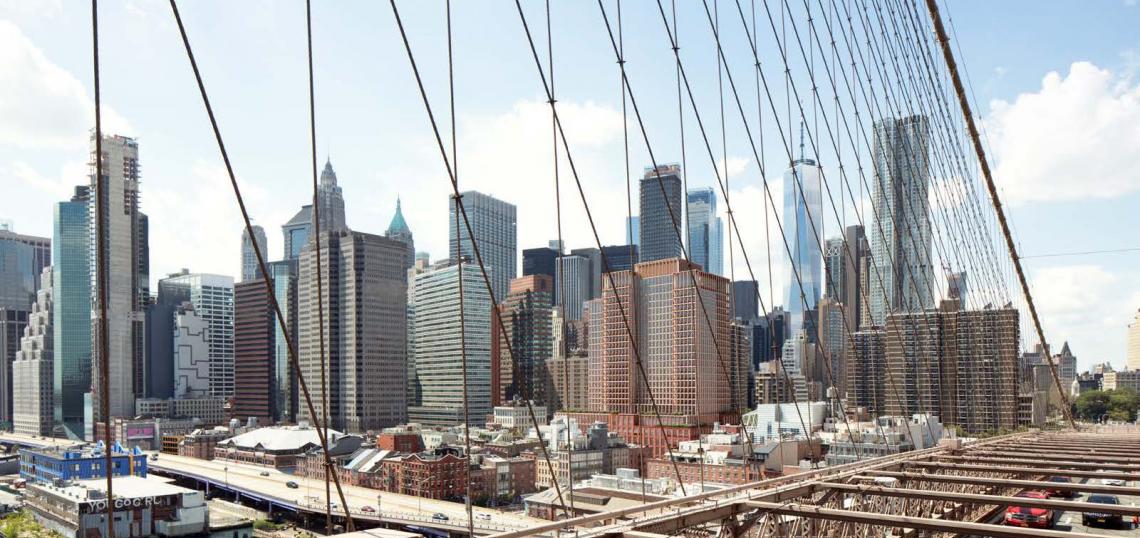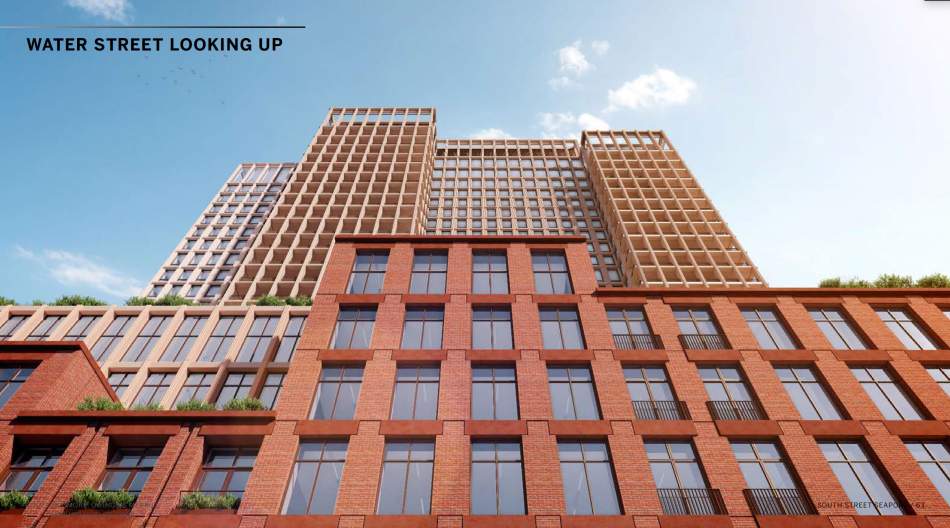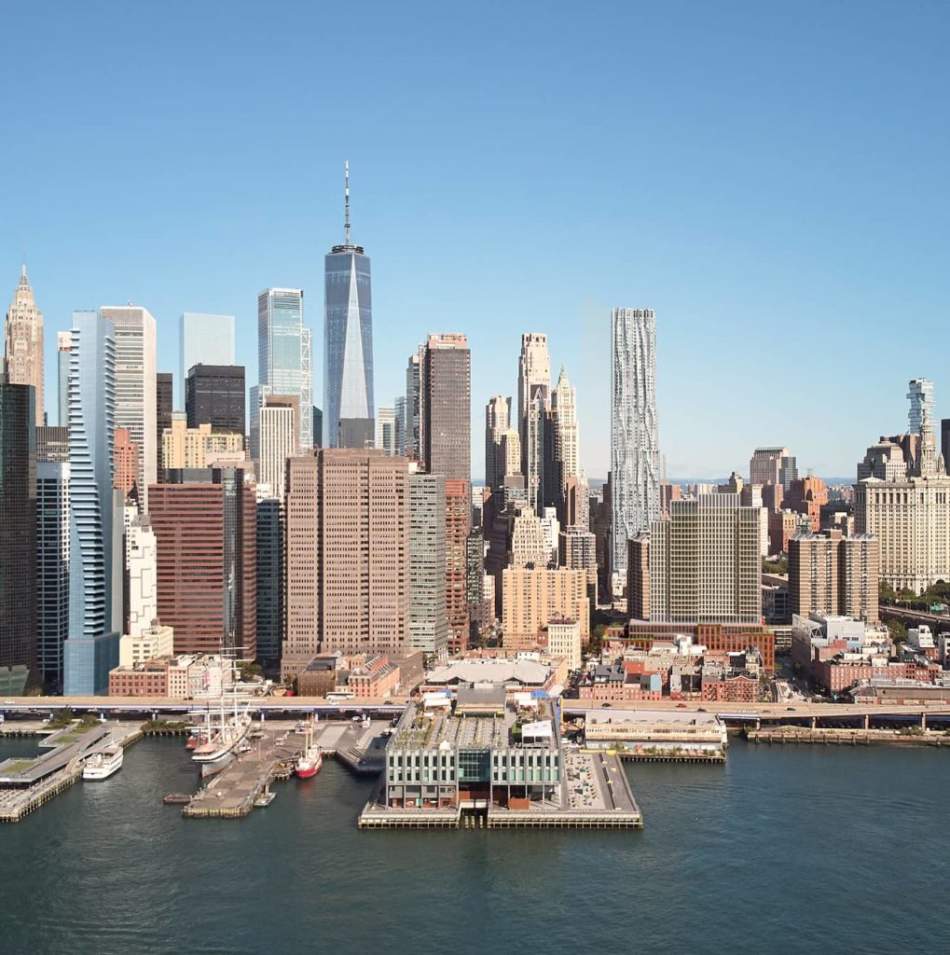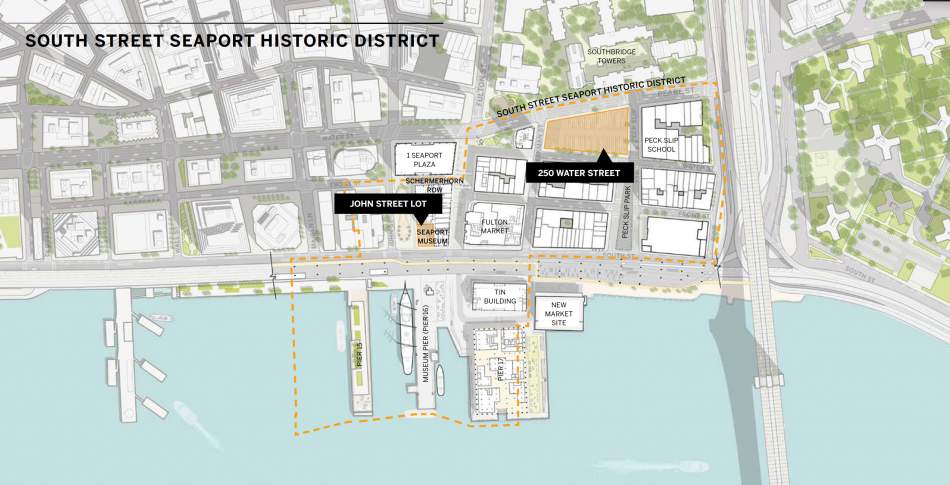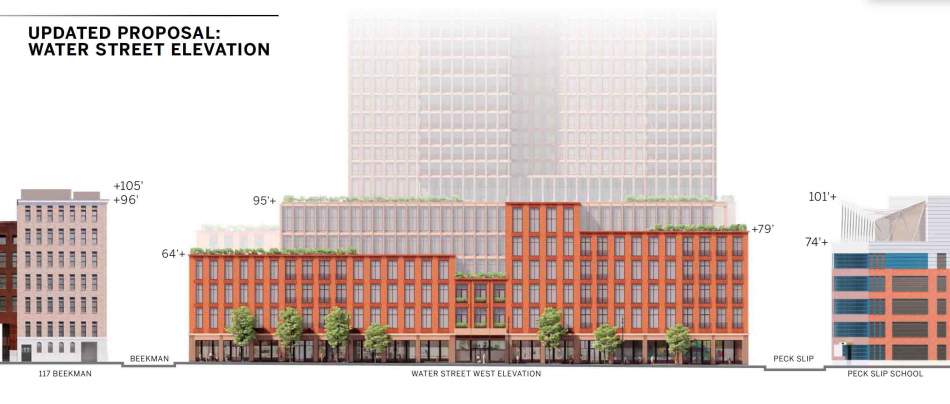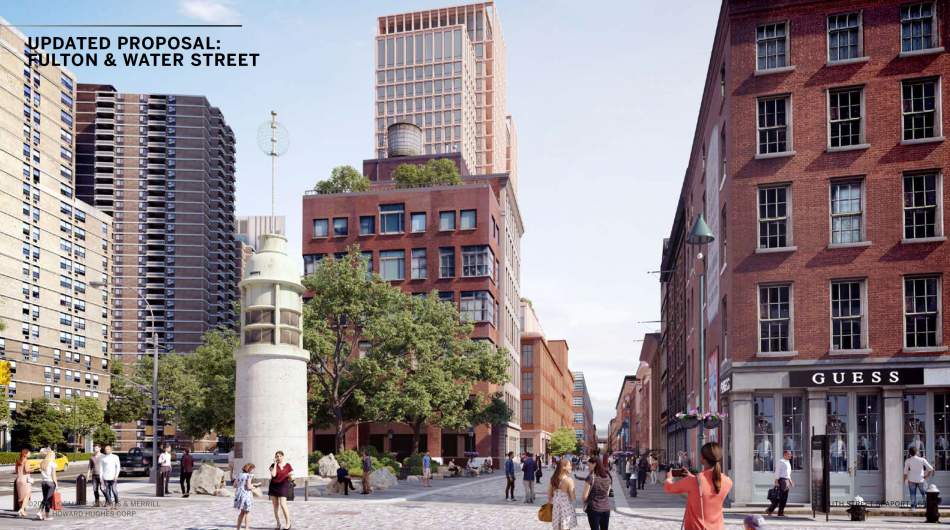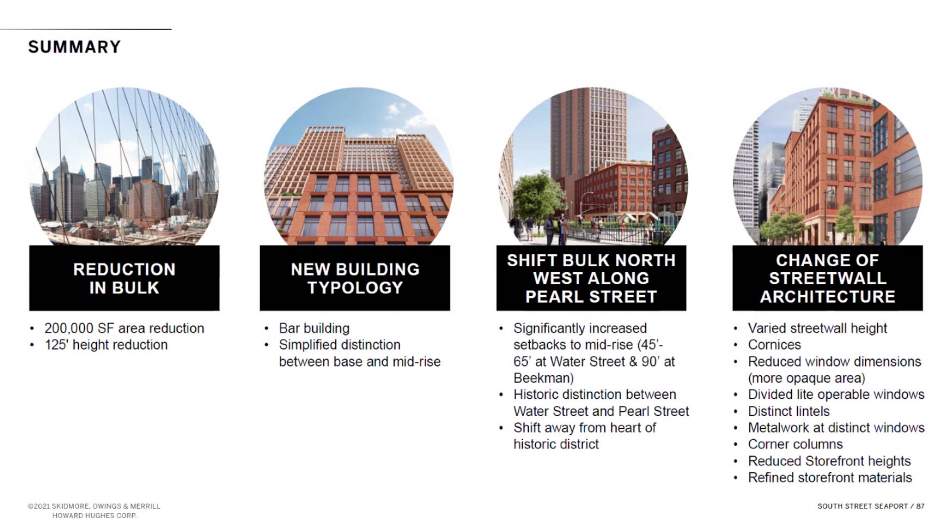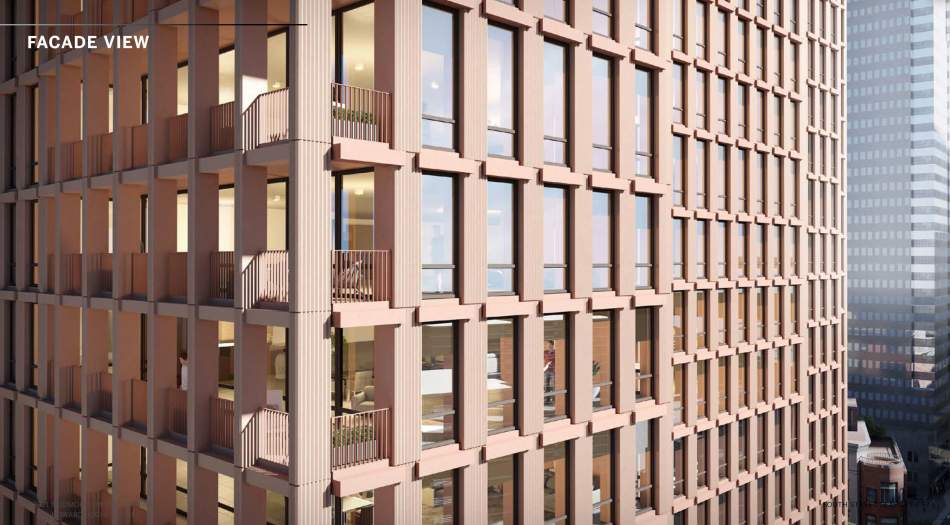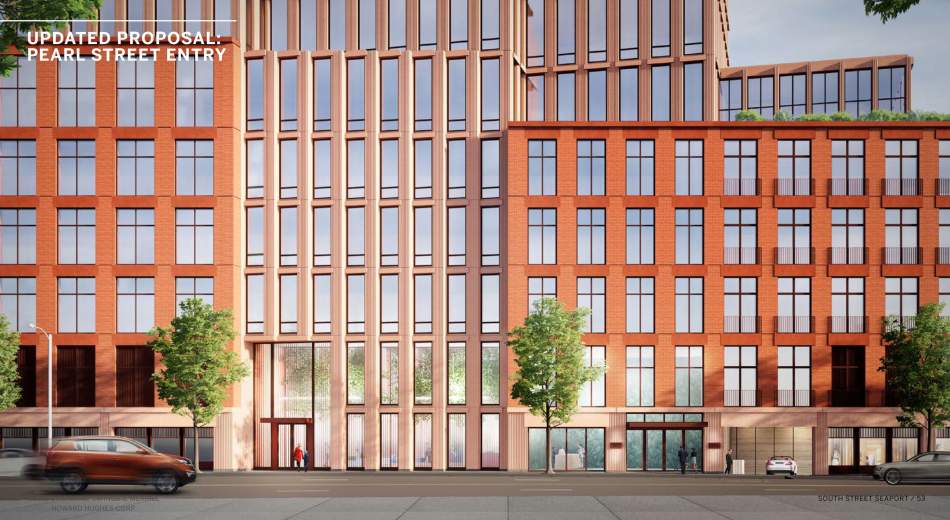The third time was not the charm for Howard Hughes Corporation (HHC), which again went before the Landmarks Preservation Commission Tuesday to present their updated proposal for 250 Water Street Tower and an expanded South Street Seaport Museum, the anchor destination of the South Street Seaport Historic District.
Following nearly seven hours of public testimony and comments, the LPC again took "no action" on the controversial plan to build a full-block tower on a 400-space surface parking lot and renovate and grow the Seaport Museum.
While the LPC was largely in favor of the museum updates, their main point of contention remained the height and mass of the tower, which even after being reduced by nearly 30 percent in size, still well exceeded other buildings in its low-slung historic district.
Saul Sherl of HHC and Chris Cooper of Skidmore, Owings & Merrill (SOM) presented their reworked application to the commission, which condensed the programming of two 470-foot-tall towers with more than 757,000 square feet into one 300-foot-tall building with 550,000 square feet.
Other changes undertaken included a simplified distinction between the podium and tower; increased setbacks that push the tower portion back to Pearl Street; as well as changes to the street wall.
The revision followed extensive comments from the LPC (and even more hours of public testimony) offered earlier this year on January 5th and 12th, when no action was also taken.
SOM also revisited plans for the South Street Seaport Museum — the crux of the Seaport District — which was severely damaged during Superstorm Sandy.
The design of the museum was tweaked just slightly, with the addition seeing a reduced bulkhead and a change in materials for the screen.
The architects opted to maintain the copper facade despite previous comments asking for an exploration of other materials and treatments. SOM deemed the copper to be the most appropriate, especially if it is allowed to patina and age naturally over time like other materials seen in the district, including those cladding ships.
Under the proposal, HHC would provide a $50 million endowment to the museum, funding its restoration and expansion into a new building at 89 South Street (another vacant lot). The money would also serve as a "lifeline" for the museum's operational budget, which has been in dire straits since 9/11 and only worsened with the pandemic. The museum board shared today that it only has enough funding to get it through one more year.
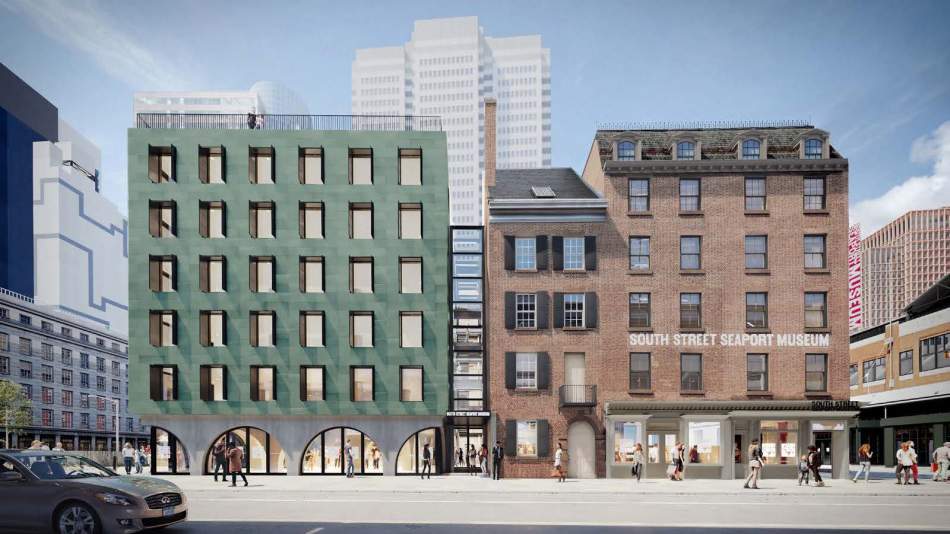 HHC | SOM | Museum addition with a copper-clad facade patinaed over time
HHC | SOM | Museum addition with a copper-clad facade patinaed over time
Support for and against the development was split down the middle, with nearly 200 people showing up to speak and plenty of written statements submitted in advance.
During public testimony, Manhattan Borough President Gale Brewer noted that the project would "enhance the district" and "secure the future of the museum," while City Council Member Margaret S. Chin, who represents the area, underscored the critical role the museum plays in the district. "There would be no South Street Seaport without the museum," she said.
Chin also stressed the benefits of the development in adding affordable housing, which she guaranteed would be "made truly affordable for families who really need it." The project would provide 70 new affordable units in a district where only 2.5 percent of housing is affordable.
Organizations that came out in support included the Alliance for Downtown New York; the Artistic Programs at the Lower Manhattan Cultural Council; Mitchell L. Moss, Henry Hart Rice Professor of Urban Policy and Planning, and Director of the Rudin Center for Transportation; REBNY; the Manhattan Chamber of Commerce; the New York Building Congress; and the Association for a Better New York.
There were also numerous challengers present, including the Historic Districts Council, Village Preservation, City Club of New York, and many local residents. Several groups accused HHC of dangling the museum carrot and affordable housing in order to garner the needed air rights (which would be transferred from the Tin Building and Pier 17, both city-owned), while others argued that the tower's bulk and scale remain wholly inconsistent with the district where buildings are on average four or five stories. Many also contended that a Landmarks approval would set a "dangerous precedent" and its effects would echo across the city's other historic districts.
While the LPC agreed the redesign was headed in the right direction, all but Chair Sarah Carroll took issue with the height and mass of the tower.
Caroll deemed both the new tower and museum design appropriate and pointed to the existing LPC-approved buildings in the district for context. She also called the current parking lot "a distraction" that does not read as part of the district and noted that the new development would better complete the block. She refuted the above argument of precedent-making with "I do not believe approving a taller building would set a precedent in this district or other district." Caroll highlighted the "unusual nature and size of the lot" which is significantly larger than any other vacant site now found in a historic district.
On the opposing side, Commissioner Michael Goldblum was one of the most vocal. While in favor of the museum design, he deemed the tower inappropriate for its historic context insisting that the height would need to be brought down to the tallest existing building in the district to harmonize. And although the financing of the museum does not come under LPC purview, Goldblum did not miss the opportunity to call out the brutish turn of tying the museum's fate to the tower.
Ultimately, the LPC made no decision and again invited HHC and SOM to rework the design with the new comments and return.
It is not clear, however, if HHC and SOM will go back to the drawing board. A New York Post article published in March wrote "if LPC gives another thumbs-down, HHC says it will develop the site 'as of right' with a much smaller building (of 12 stories and 120 feet) — with no affordable units and no financial aid the struggling museum." (Although some peg the declaration a way to put pressure on the LPC and city to approve the project)
Over the past 25 years, the LPC has turned down nine different proposals for 250 Water Street, including another SOM and HHC collaboration proposed in March 2020 that envisioned a 990-foot tower for the site.
- South Street Seaport (Urbanize NYC)





